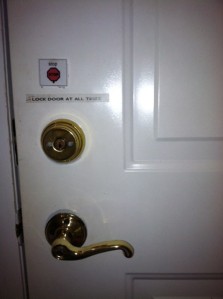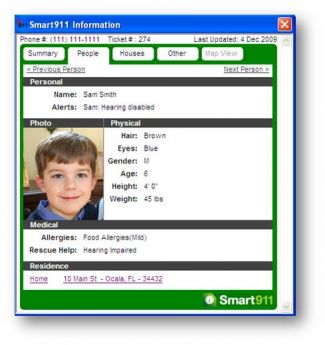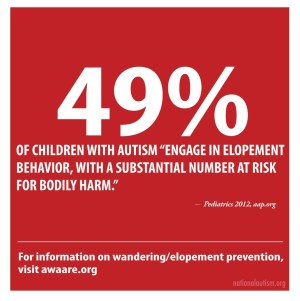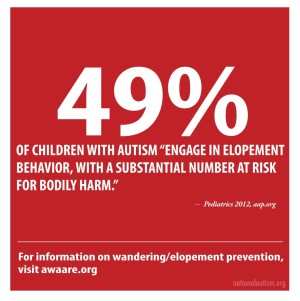Blog #60~ Wandering and Autism: 7 Prevention Strategies

HEADLINES……
“Car hits, kills 11-year-old autistic boy on the Katy Freeway”
“Body found in pond is missing autistic child”
“Autistic boy found dead, face down in a lake”
A lost child is a parent’s worst nightmare. Sadly, the headlines above are just a sample of instances involving wandering/elopement and autism all over the country.
Much like the wandering behaviors in seniors with dementia or Alzheimer’s, children and adults with an Autism Spectrum Disorder (ASD) are prone to wandering away from a safe environment. A study done by The Interactive Autism Network through the Kennedy Krieger Institute found this: “49% of children with autism attempt to elope from a safe environment, a rate nearly four times higher than their unaffected siblings. Two in three parents of elopers reported their missing children had a “close call” with a traffic injury. Thirty-two percent of parents reported a “close call” with a possible drowning.”
I understand this fear all too well. There have been a several occasions where Nick has wandered, taken off at the pool and bolted down the street. Nick is 19 years old and has a dual diagnosis of Down syndrome and autism (DS-ASD). He has deficits in the areas of language and cognitive function which limits his understanding of safety. He has no concept of danger.
One day when Nick 11 years old he was on the swing set in the backyard. His Dad stepped inside to grab a baseball hat for a second. Something made me stop and put down the garden shovel next to the flat of flowers. I walked around to the backyard. He was gone.
Al came out the patio door. I shouted to him, “Did Nick go inside?”
“No, I just came in for a second to grab a baseball hat.”
I felt a hot wave run through my body as I climbed up the burm, the slow crested hill that separated the backyard from the busy street.

Al had recently ruptured his Achilles tendon and was wearing a therapy boot. He hobbled up slowly behind me. There was nothing but a stream of fast-moving cars pacing the road behind our house.
I called out to his older brother, “Hank, go to the front and check with the neighbors and see if anyone saw him okay. Do it now!”
My neighbor came over, “I saw him a few minutes ago. He got off the swing and started chasing a bunny.” He pointed his finger left, “He ran that way.”
In the Midwest, the yards blend from one to the next in a seamless row like football fields connected one after the other. I squinted hoping to see some movement. There was nothing, just eerie silence. I took off running. A dozen houses down, nothing. Over ten minutes had passed since he had gone missing. I was in panic mode, my body was shaking and legs began to fatigue. I kept sprinting but there were only five houses left before the subdivision entrance. Suddenly, I saw a small figure running. “Nick stop now!”
He just kept going. My strides turned into leaps. I caught up with him 2 houses before he reached the subdivision entrance. He looked at me as if nothing was wrong. We walked in silence back home. I gripped his hand tightly and counted how many houses he had run passed. Final count=20 houses!
It makes me sick to my stomach recalling that horrible day. We have since put some things in place as a precaution to keep Nick safe. What can families do to insure the safety of their child? In my research, I found an excellent website called AWAARE which stands for Autism Wandering Awareness Alerts Response Education: www.awaare.org. This site has a comprehensive list of tips, materials and tools.
7 TIPS FOR WANDERING AND AUTISM RISK MANAGEMENT:
1. Secure your home
Install secure door locks, home security systems, install inexpensive battery operated alarms on door and window to alert when opened. Place hook and eye locks on all doors above your childs reach. Fence in the yard and put visuals like stop signs to doors.
Here is what we have on our doors…….

2. Get an ID Bracelet
Medic Alert, www.medicalert.org is what Nick wears and it stays on him firm.

Another popular bracelet is called Project Lifesaver, www.projectlifesaver.org.
3. Consider a mobile tracking device
Project Lifesaver (https://projectlifesaver.org), Angel Sense https://www.angelsense.com) and LoJack SafetyNet (www.safetynetbylojack.com) services have wrist and ankle tracking devices. There are many other mobile GPS tracking systems you can purchase at Best Buy and other big box stores along with phone apps as well. See the resource page on the AWAARE website above for more information.
4. Teach your child to swim
A large percentage of the headlines for wandering and autism end tragically because of drowning deaths. Children are often drawn to water. Check your local YMCA or special recreation association for swim lessons.

5. Alert your neighbors
Make a simple handout with your name, address, phone number, information about your child (autism, non-verbal etc….) and include a photograph of your child. Ask them to call you immediately if they see your child outside of your home.
6. Alert First Responders
Provide the local police and fire stations with key information before an incident occurs. Ask your local police department if they have a data base and registration program for individuals with special needs. See the AWAARE website given above for printable handouts. There is also a free Big Red Safety Toolkit with free downloads on wandering and prevention.
7. Work with an ABA Therapist on a Behavior Plan
A BCBA certified behavior therapist can help with understanding the child’s goal and triggers that cause them to wander. The child may be trying to get to something they prefer, or avoid something they don’t want to do. When you can determine the function of this behavior, you can put supports and strategies in place to decrease wandering or bolting. If the behavior is occuring in school, address this with the IEP team and put measures in place to insure safety for your child.
Nick still requires 24/7 supervision and the house is sealed up like Fort Knox. As a family we have to make sure there is always a designated watchman. After doing this research on autism and wandering, I understand the necessity to be proactive and more responsible. Next stop: Make a call into the local police and fire stations to see what they have in place for wandering and persons with autism and other special needs in our community. Discussion of this topic needs to continue. I will be researching more tracking and monitoring devices. Look for this on Part Two of Autism and Wandering within the next two weeks.
That’s what is in my noggin this week!
~Teresa 🙂
Follow Nick:
Facebook and Pinterest @Down Syndrome With A Slice Of Autism
Instagram #nickdsautism
Twitter @tjunnerstall















 @Down Syndrome With A Slice Of Autism
@Down Syndrome With A Slice Of Autism #nickdsautism
#nickdsautism







